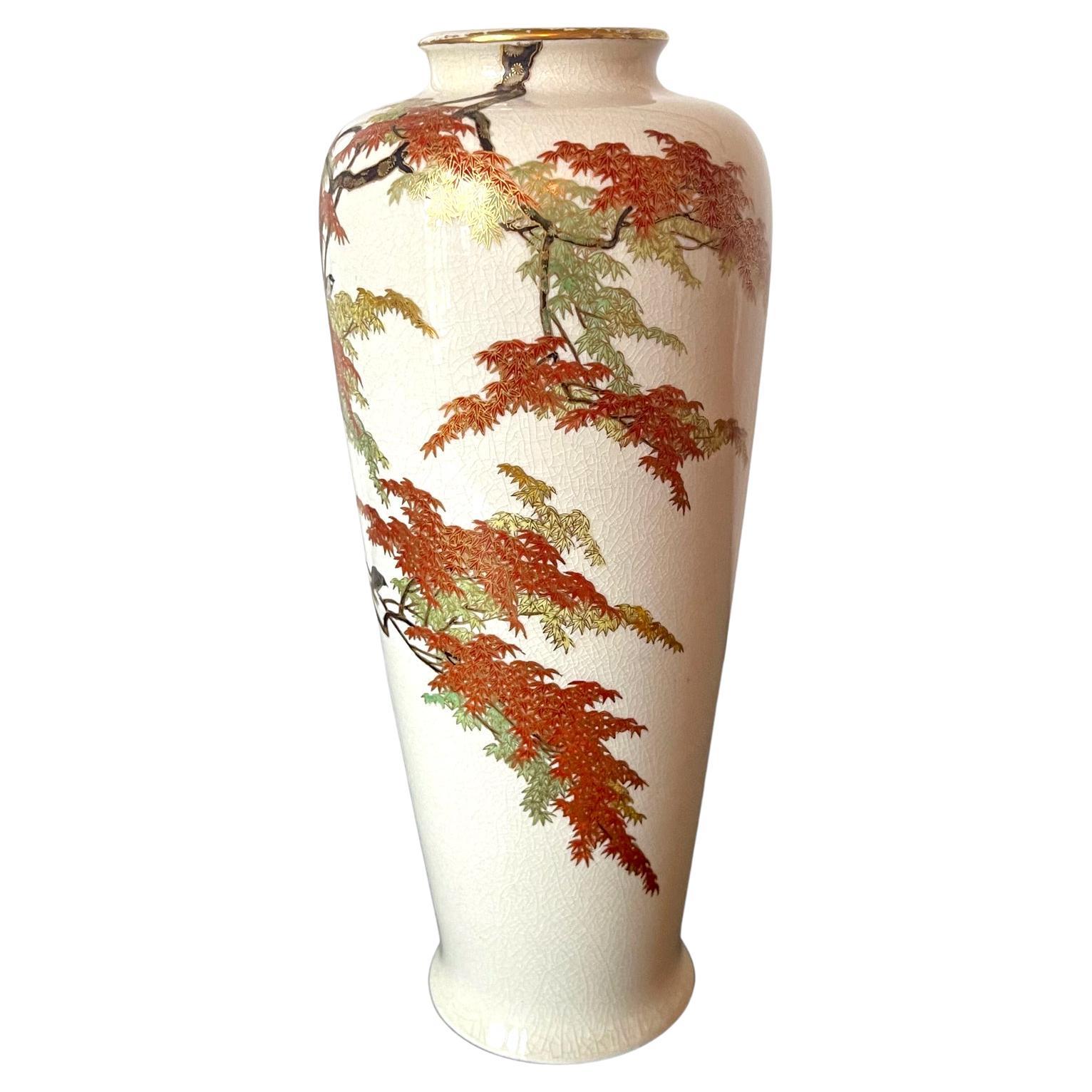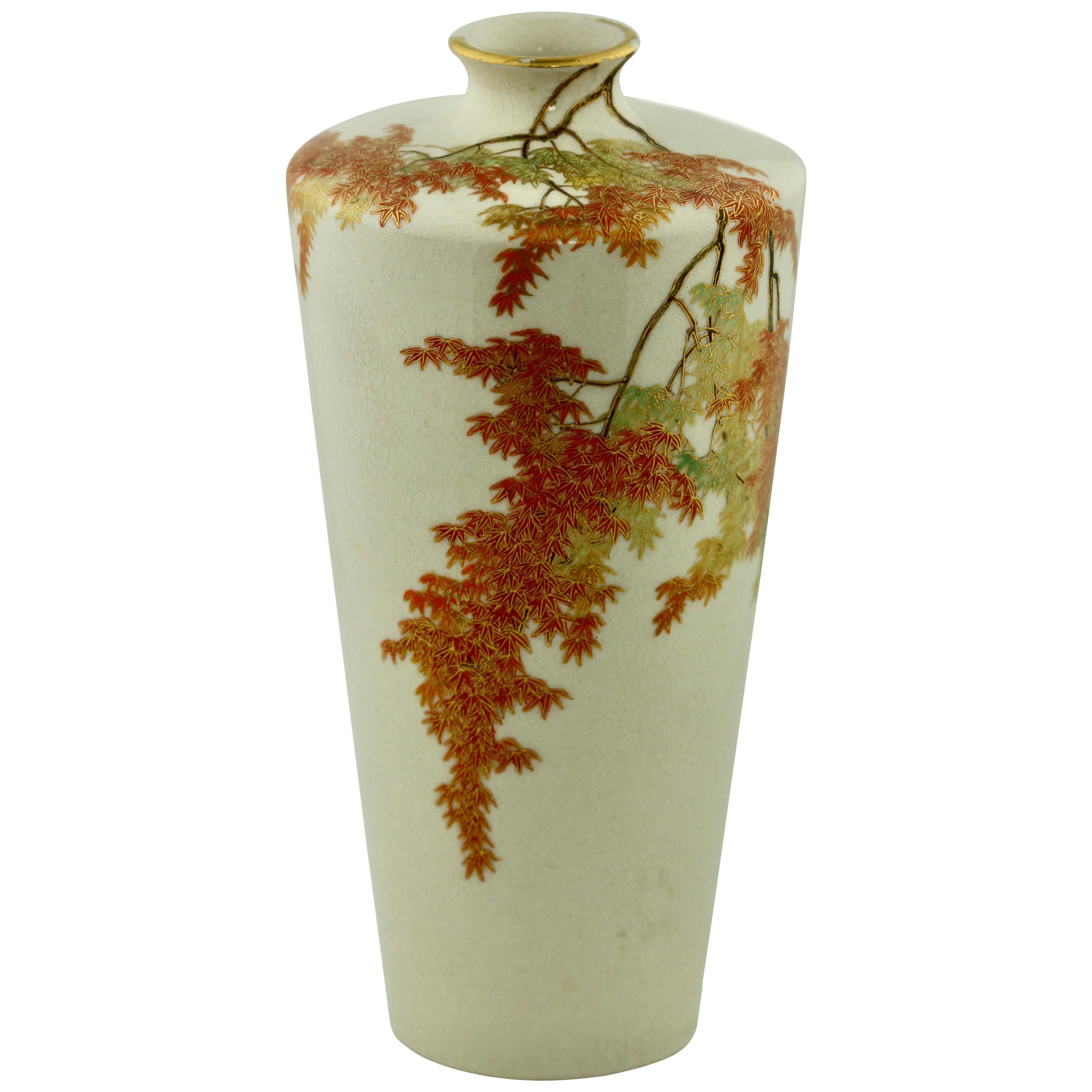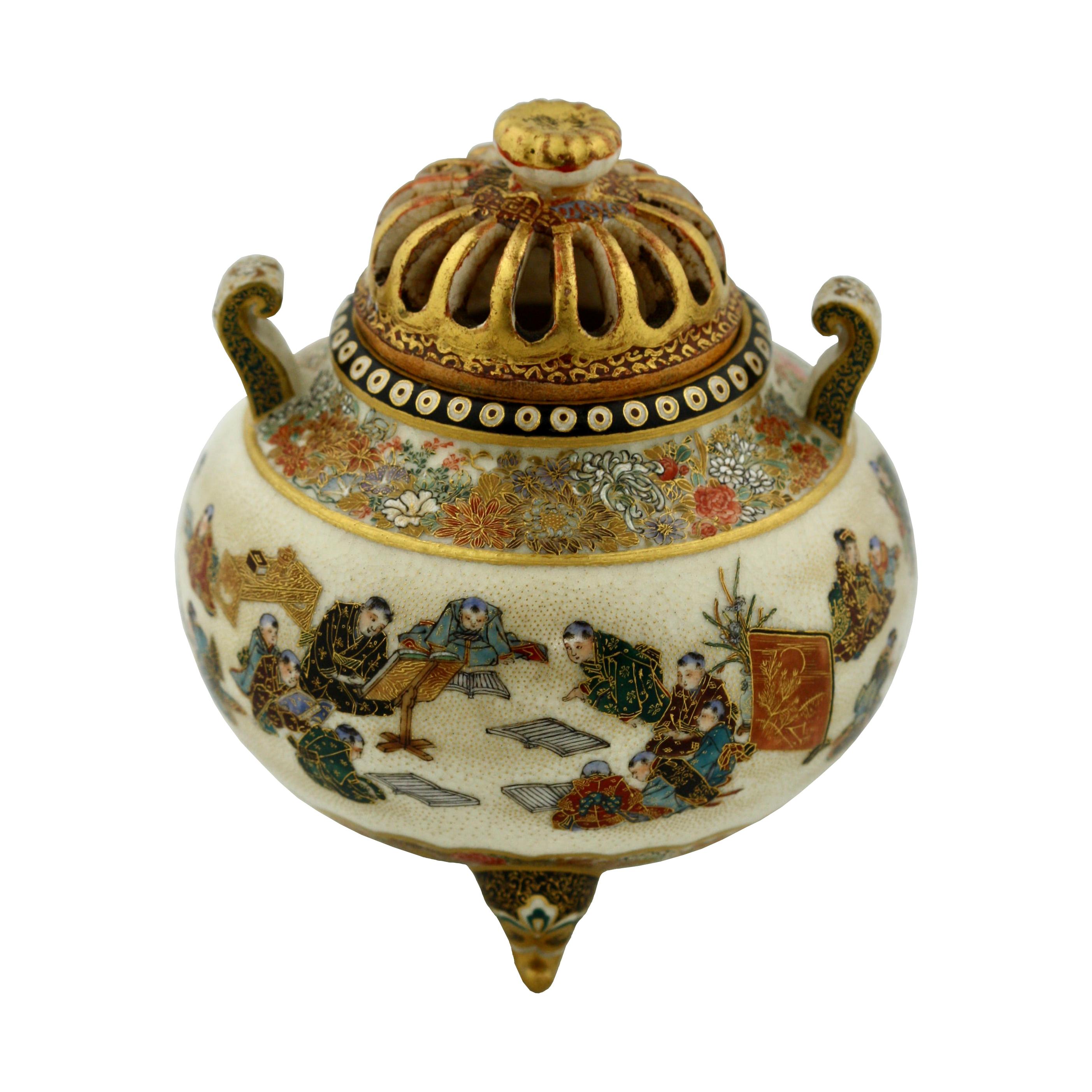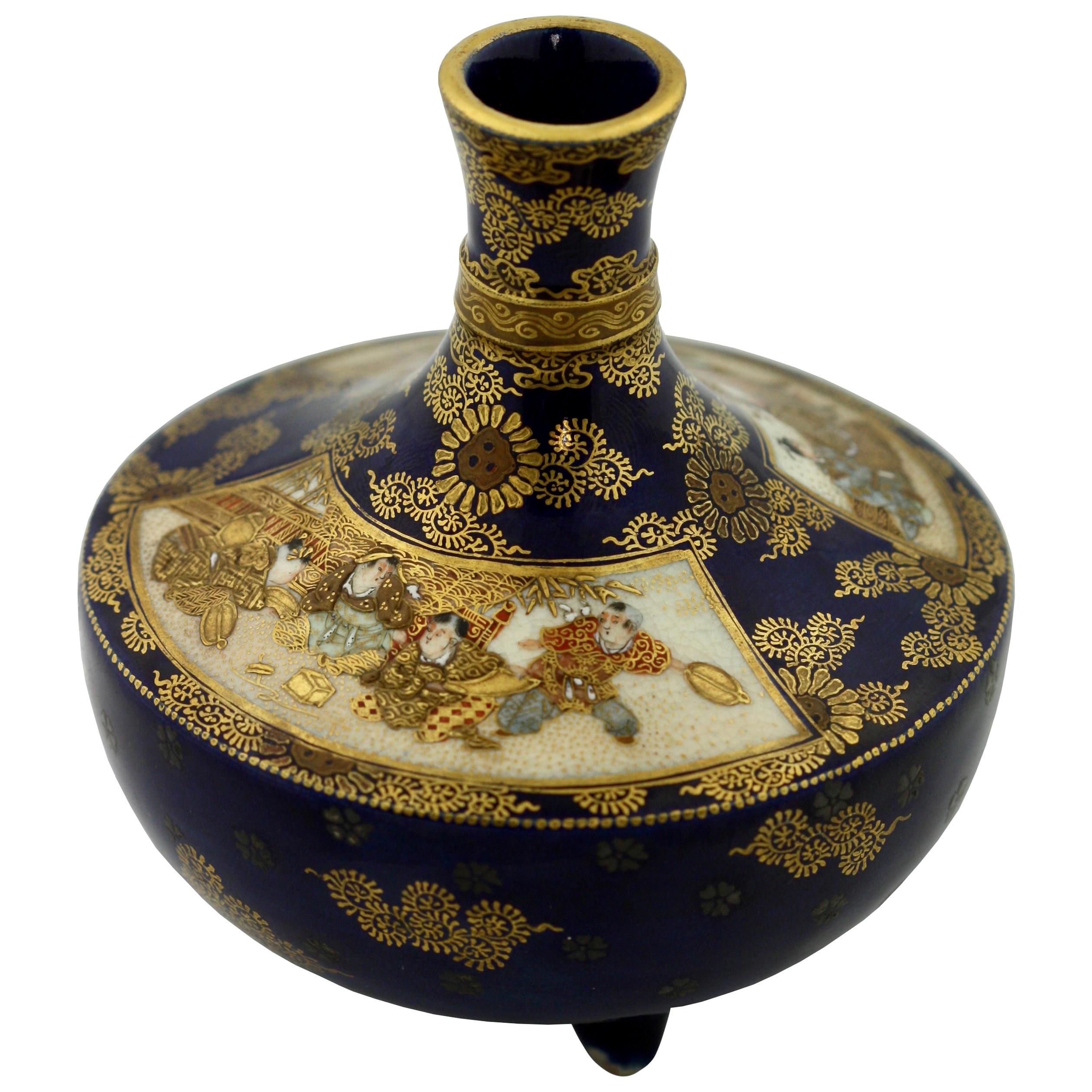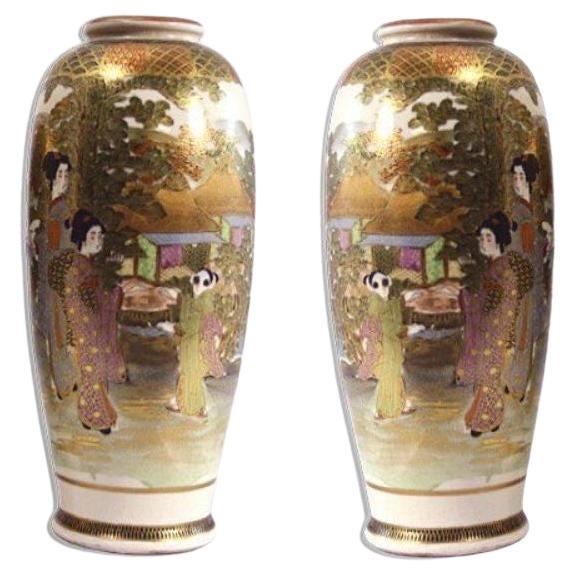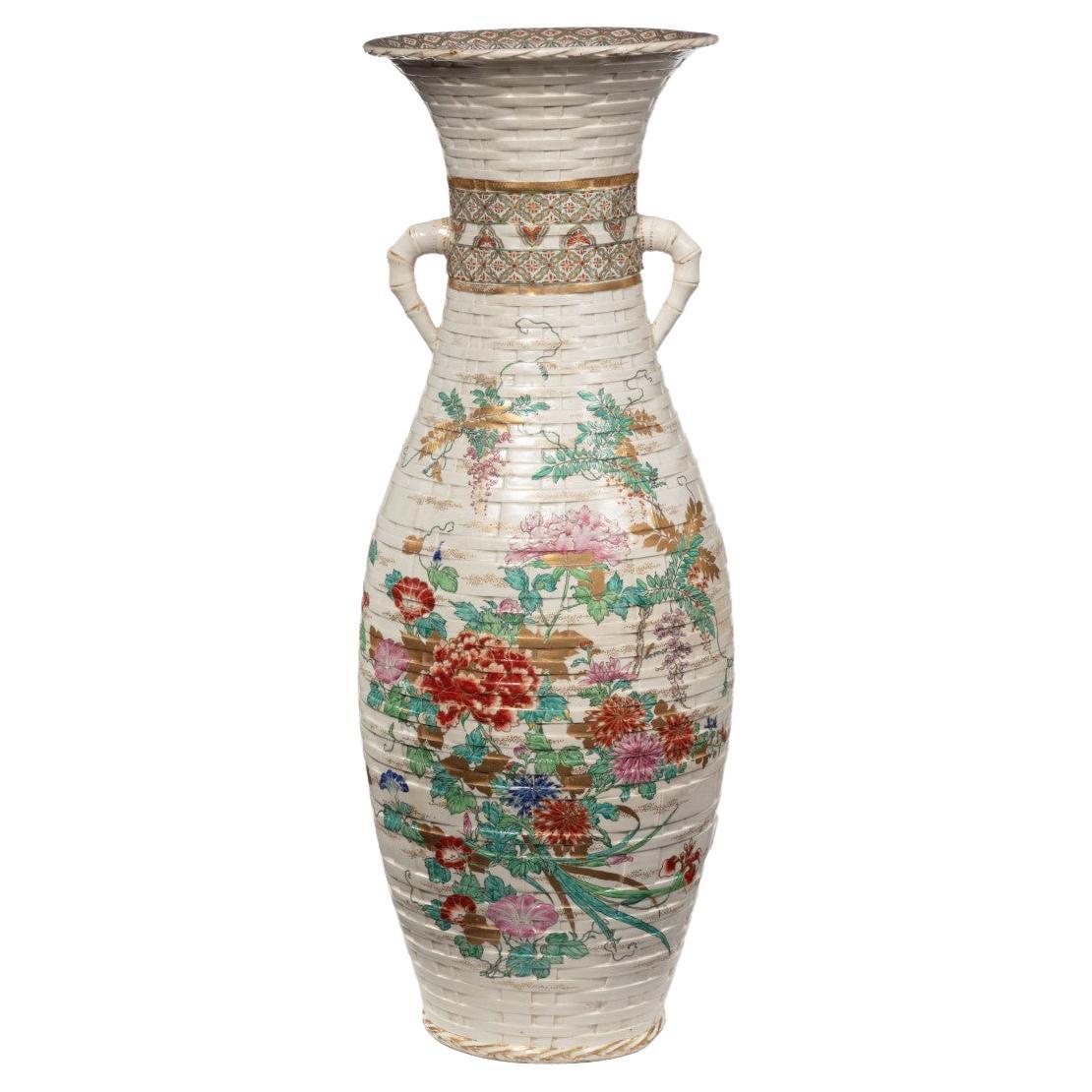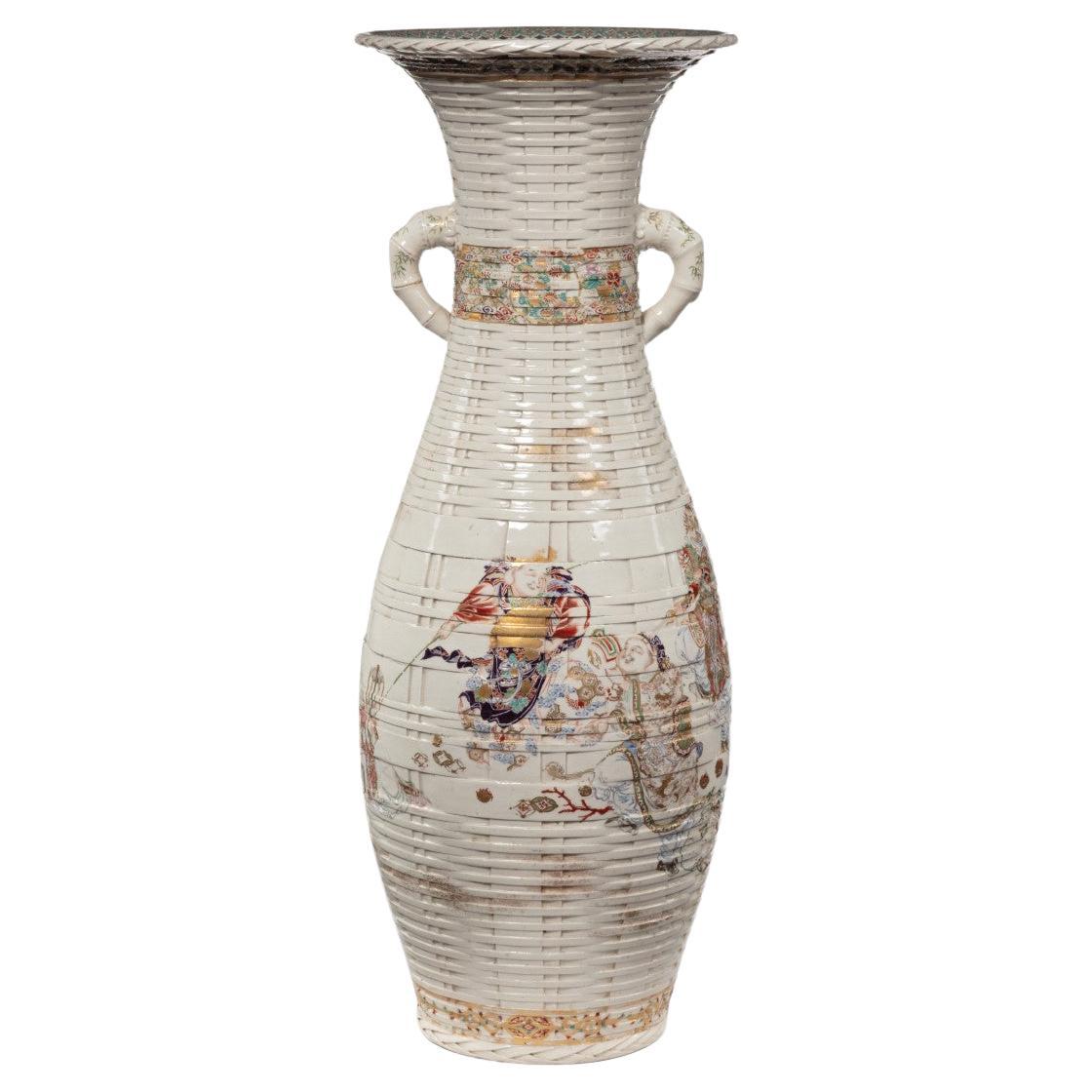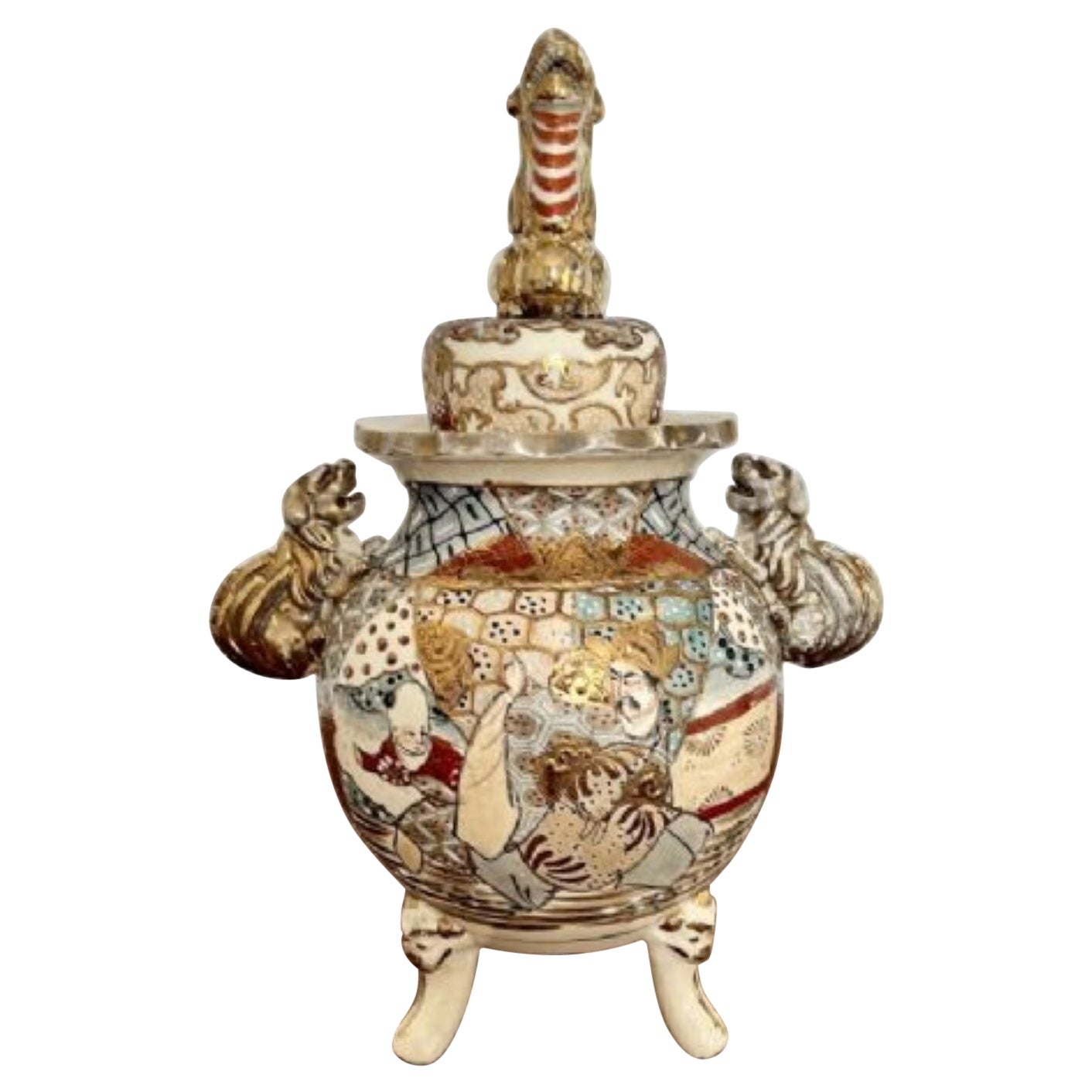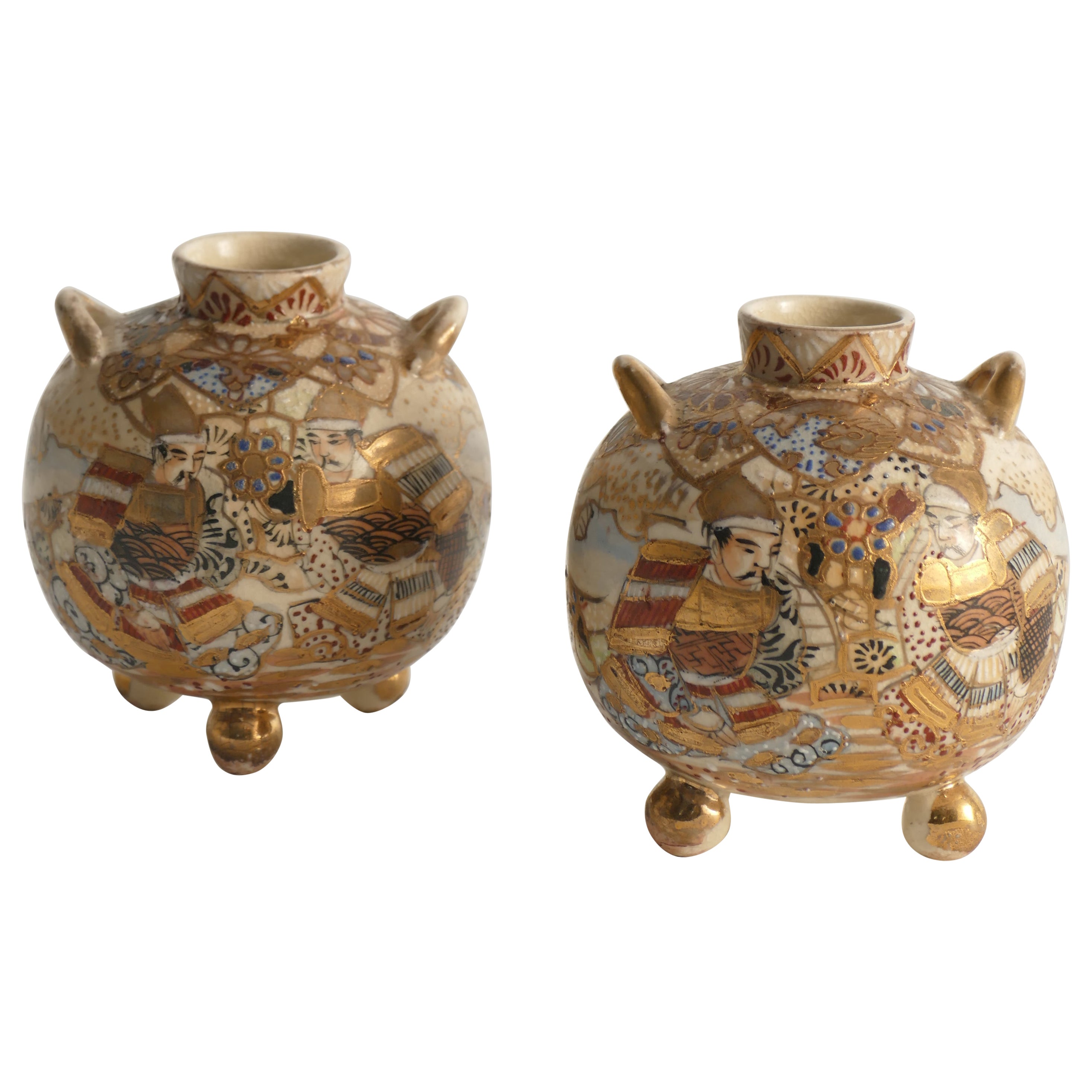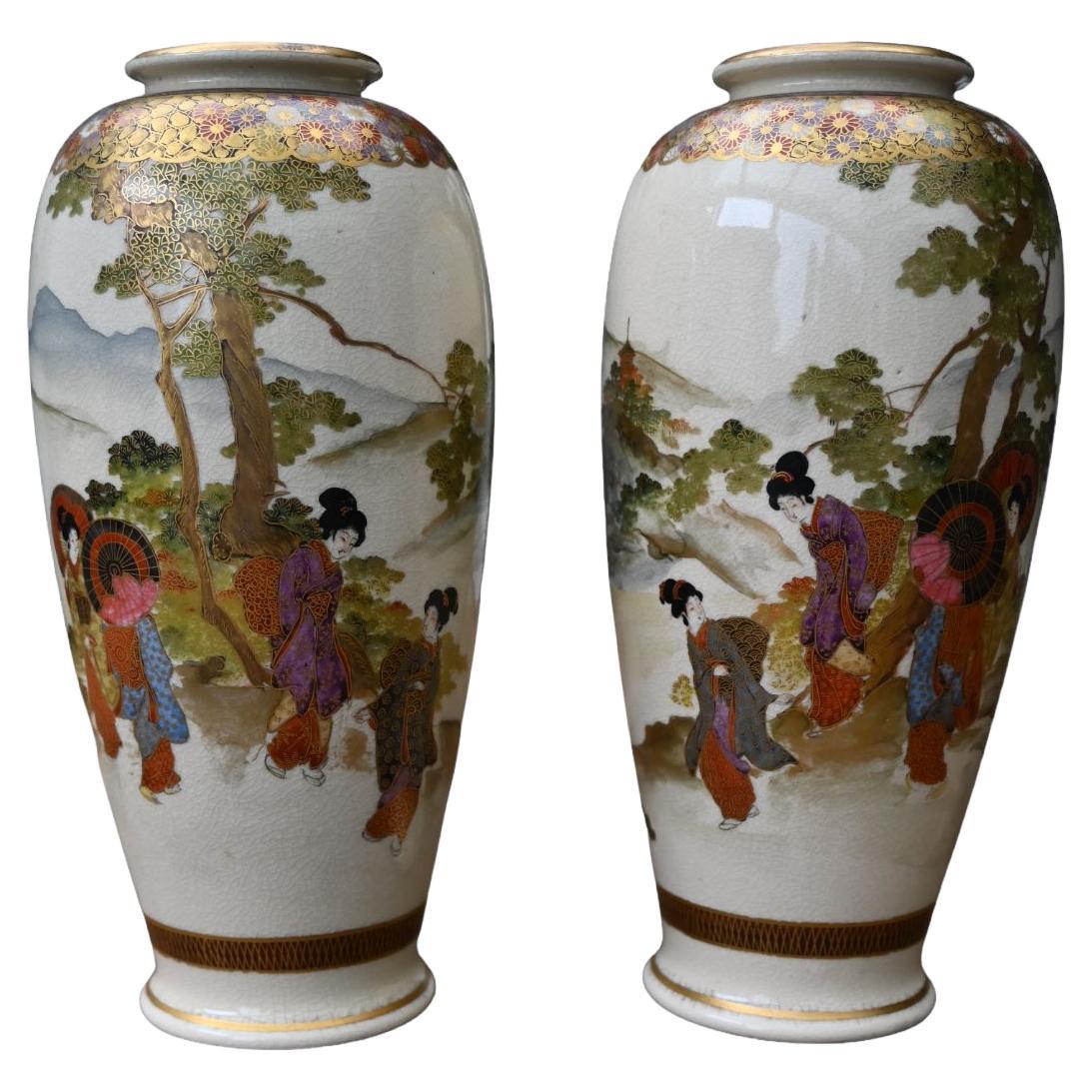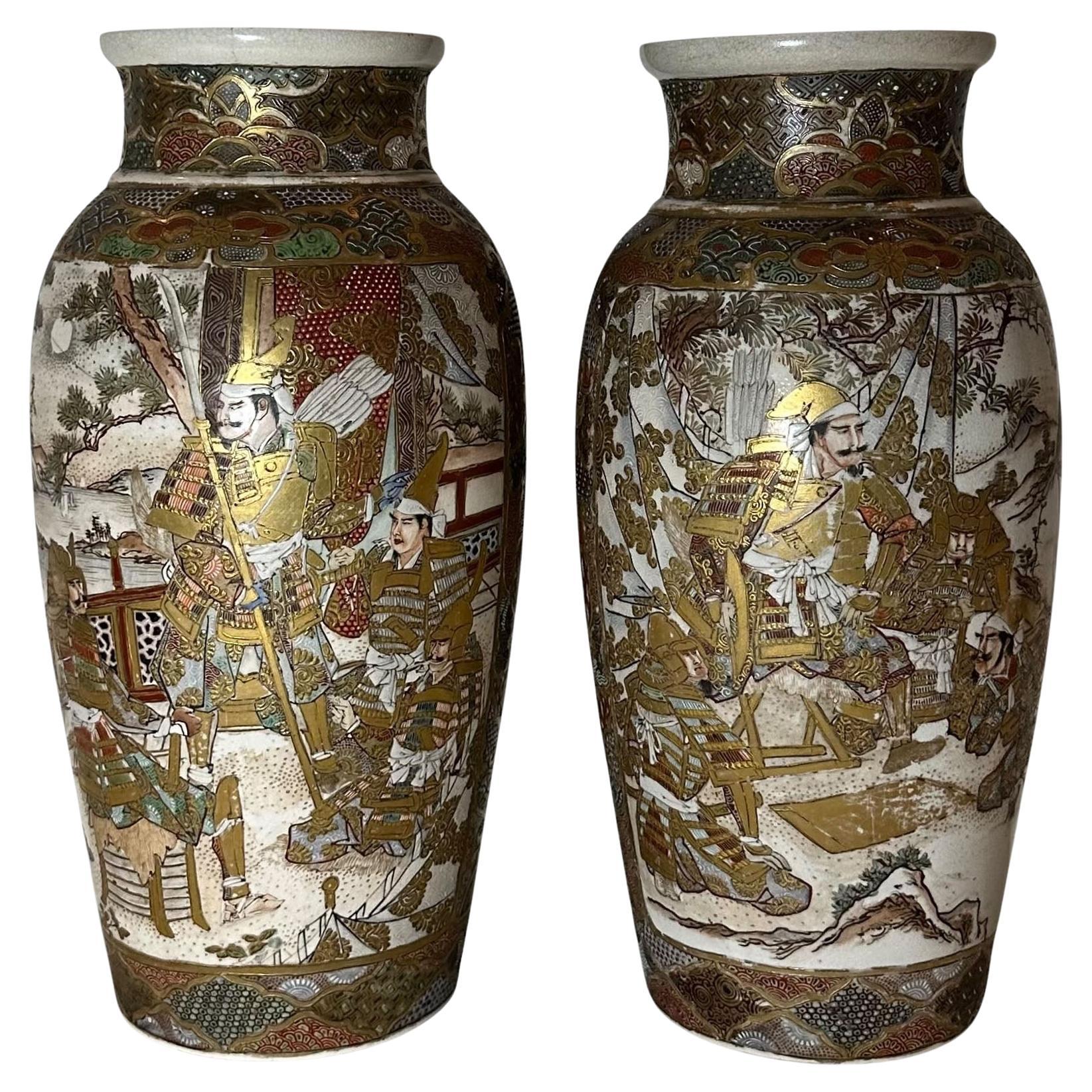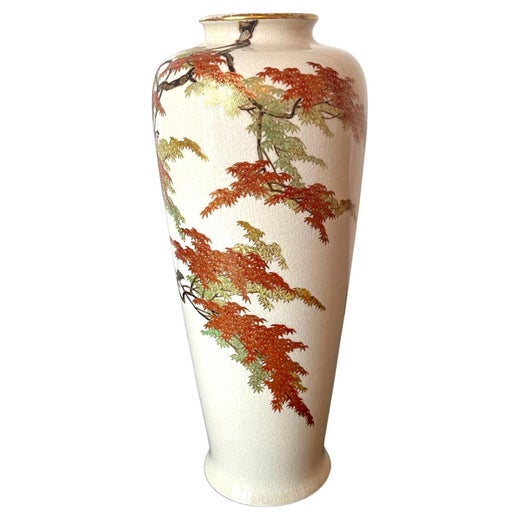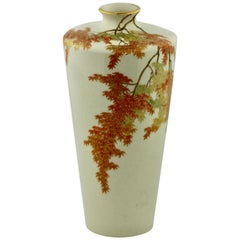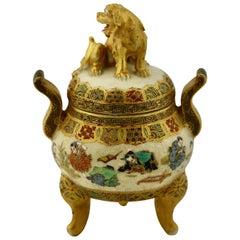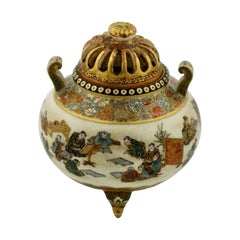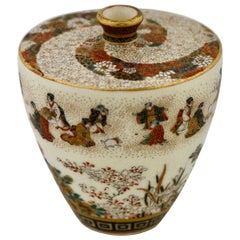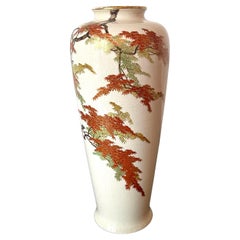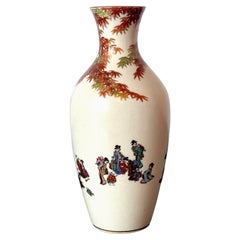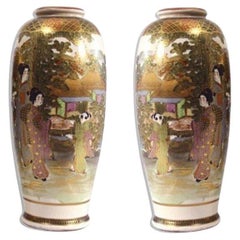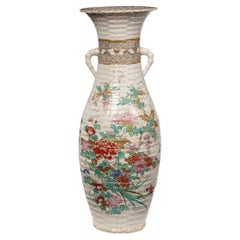
Satsuma Covered Earthenware Vase by Yabu Meizan
View Similar Items
Want more images or videos?
Request additional images or videos from the seller
1 of 9
Satsuma Covered Earthenware Vase by Yabu Meizan
$12,600List Price
About the Item
- Creator:Yabu Meizan (Artist)
- Dimensions:Height: 6.2 in (15.75 cm)Diameter: 3.2 in (8.13 cm)
- Materials and Techniques:
- Period:
- Date of Manufacture:circa 1853
- Condition:Wear consistent with age and use.
- Seller Location:West Palm Beach, FL
- Reference Number:1stDibs: LU3860117655232
Yabu Meizan
Yabu Meizan was a Japanese artist and workshop owner known for painting on porcelain. He was the most prolific producer of Satsuma ware. Meizan actively marketed his work internationally as well as domestically, taking an active role in organizing the presentation of Japanese wares at the world's fairs.
About the Seller
5.0
Vetted Professional Seller
Every seller passes strict standards for authenticity and reliability
Established in 1989
1stDibs seller since 2018
116 sales on 1stDibs
Typical response time: 20 hours
Authenticity Guarantee
In the unlikely event there’s an issue with an item’s authenticity, contact us within 1 year for a full refund. DetailsMoney-Back Guarantee
If your item is not as described, is damaged in transit, or does not arrive, contact us within 7 days for a full refund. Details24-Hour Cancellation
You have a 24-hour grace period in which to reconsider your purchase, with no questions asked.Vetted Professional Sellers
Our world-class sellers must adhere to strict standards for service and quality, maintaining the integrity of our listings.Price-Match Guarantee
If you find that a seller listed the same item for a lower price elsewhere, we’ll match it.Trusted Global Delivery
Our best-in-class carrier network provides specialized shipping options worldwide, including custom delivery.More From This Seller
View AllSatsuma Tapering Cylindrical Square High-Shouldered Vase by Yabu Meizan
By Yabu Meizan
Located in West Palm Beach, FL
A Satsuma tapering cylindrical square high-shouldered vase
by Yabu Meizan,
Osaka, 1853-1934,
decorated in polychrome enamels and gilt over a clear, cr...
Category
Antique 1850s Vases
Materials
Enamel
Satsuma Koro and Cover by Yabu Meizan
By Yabu Meizan
Located in West Palm Beach, FL
A Satsuma Koro and cover by Yabu Meizan, Osaka, 1853-1934, delicately painted with various scenes of children playing, the top with lion finial, raised on...
Category
Antique Early 1900s More Asian Art, Objects and Furniture
Materials
Ceramic
A Satsuma Earthenware Incense Burner by Yabu Meizan, Osaka, 1853-1934
By Satsuma
Located in West Palm Beach, FL
A Satsuma Earthenware Incense Burner by Yabu Meizan,
Osaka, 1853-1934,
Of archaic Chinese form set on tripod feet and decorated in polychrome enamels and gilt...
Category
Antique Early 1900s Vases
Materials
Earthenware
Satsuma Earthenware Flat Shouldered Ovoid Vase, Garlic Mouth by Yabu Meizan
By Satsuma
Located in West Palm Beach, FL
A Satsuma earthenware flat shouldered ovoid vase with garlic mouth by Yabu Meizan,
Osaka, 1853-1934,
decorated in polychrome enamels and gilt over a cle...
Category
Antique 1890s More Asian Art, Objects and Furniture
Materials
Earthenware
Satsuma Earthenware Vase, by Kinkozan
By Satsuma
Located in West Palm Beach, FL
A Satsuma earthenware vase,
by Kinkozan,
Japanese, Meiji period (1868-1912)
decorated in polychrome enamels and gilt over a clear, crackled glaz...
Category
Antique Early 1900s Vases
Materials
Earthenware
Satsuma Earthenware Covered Box, by Kinkozan
By Satsuma
Located in West Palm Beach, FL
A Satsuma Earthenware covered box,
by Kinkozan,
Japanese, Meiji period (1868-1912)
decorated in polychrome enamels and gilt over a clear, crackled glaze, delicately painted with s...
Category
Antique Early 1900s Ceramics
Materials
Earthenware
You May Also Like
Japanese Satsuma Vase Yabu Meizan Meiji
By Yabu Meizan
Located in Atlanta, GA
A Satsuma baluster form vase from the studio of Yabu Meizan (birth name Yabu Masashichi; 1853-1934), who is one of the most celebrated and collectible Satsuma artists from Meiji Peri...
Category
Early 20th Century Japanese Meiji Ceramics
Materials
Ceramic
Japanese Miniature Satsuma Vase Yabu Meizan Meiji
By Yabu Meizan
Located in Atlanta, GA
A small Satsuma vase from the studio of Yabu Meizan (birth name Yabu Masashichi; 1853-1934), who is one of the most celebrated and collectible Satsu...
Category
Antique Early 1900s Japanese Meiji Ceramics
Materials
Ceramic
Pair of Satsuma Earthenware Vases
Located in Marseille, FR
Pair of Satsuma earthenware vases from the 1880/1900 period decorated with characters. The dimensions are 16 cm high, 9 cm wide and 9 cm deep.
Addit...
Category
Antique 19th Century Vases
Materials
Earthenware
$537 / set
Large Meiji Period Satsuma Earthenware Floor Vase
Located in Lymington, Hampshire
A large Meiji period Satsuma earthenware floor vase, the of baluster form, painted in pastel overglaze enamels and gilding with two large sprays of flowers including prunus blossom, ...
Category
Antique 1870s Japanese Meiji Ceramics
Materials
Enamel
Large Meiji Period Satsuma Earthenware Floor Vase
Located in Lymington, Hampshire
A large Meiji period Satsuma earthenware floor vase, the skittle shaped body painted in pastel overglaze enamels and gilding with a continuous frieze of the Seven Gods...
Category
Antique 1870s Japanese Meiji Ceramics
Materials
Enamel
Unusual antique quality Satsuma vase & cover
Located in Ipswich, GB
Unusual antique quality Satsuma vase & cover having an unusual satsuma vase with a lift off lid with a gilded dog above a circular shaped vase raised on three legs, two gilded dogs a...
Category
Early 20th Century Vases
Materials
Ceramic
Recently Viewed
View AllMore Ways To Browse
Green And Orange Vase
Sevres French Porcelain
Large Blue White Vase
Vintage Red Ceramic
Large Blue Ceramic Vase
White Ceramic Pottery Mid Century
La Manufacture Paris
Murano Brown Glass Vase
Hand Blown Vase Blue
Black And White Ceramic Vase
Large Orange Vase
Blue Art Glass Vase
Orange And White Vases
Metal Container
Green Weller Vases
Large Black Glass Vases
White Midcentury Vase
Scandinavian Mid Century Ceramic Vases
